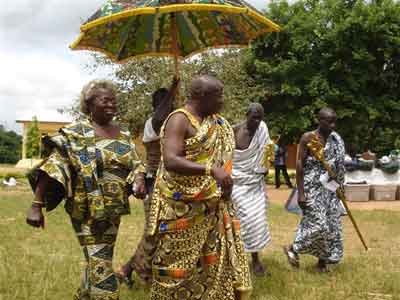Ancient Ghana History
|
Ancient Ghana Empire, also known as the Wagadou Empire, existed and flourished during the medieval period in West Africa during the 11th century. The empire was geographically 500 miles away from the present Republic of Ghana, and was located in what is now southeastern Mauritania, Western Mali and Eastern Senegal.
|
The ancient Ghana Empire occupied the area between Senegal and Niger rivers.
Origin of Ghana Empire started during the 8th century. Wagadou was the name of the tribe that ruled the land. “Ghana” was the title of its emperor on which the empire became popular in Europe and Middle East. Primary inhabitants of this empire were known as Soninkes. Koumbi Saleh, also known as the royal town of Ghana, was the capital and the commercial center of this empire. Islam was the primary religion in this empire. The emperor was considered as an incarnation of God and was highly revered and worshipped.
The ancient Ghana Empire was one of the most powerful and prosperous empires during its period. A major portion of wealth and power were derived from gold. As per the writings of several Arab writers, ancient Ghana Empire had the richest and largest gold mines on Earth, which were located at Bambuk. Till 1957, Ghana was called the Gold Coast before the Portuguese, French and the British invaded the land in their quest of gold.
Another reason for economic prosperity in the ancient Ghana Empire was the trans-Saharan trade with Europe, Middle East and North African regions. Camels were introduced as a means of shipping goods across the Sahara desert. Since the entire region was strategically located near gold, ivory and salt mines, Soninkes used to trade these items in exchange for textiles, beads and manufactured goods.

|
